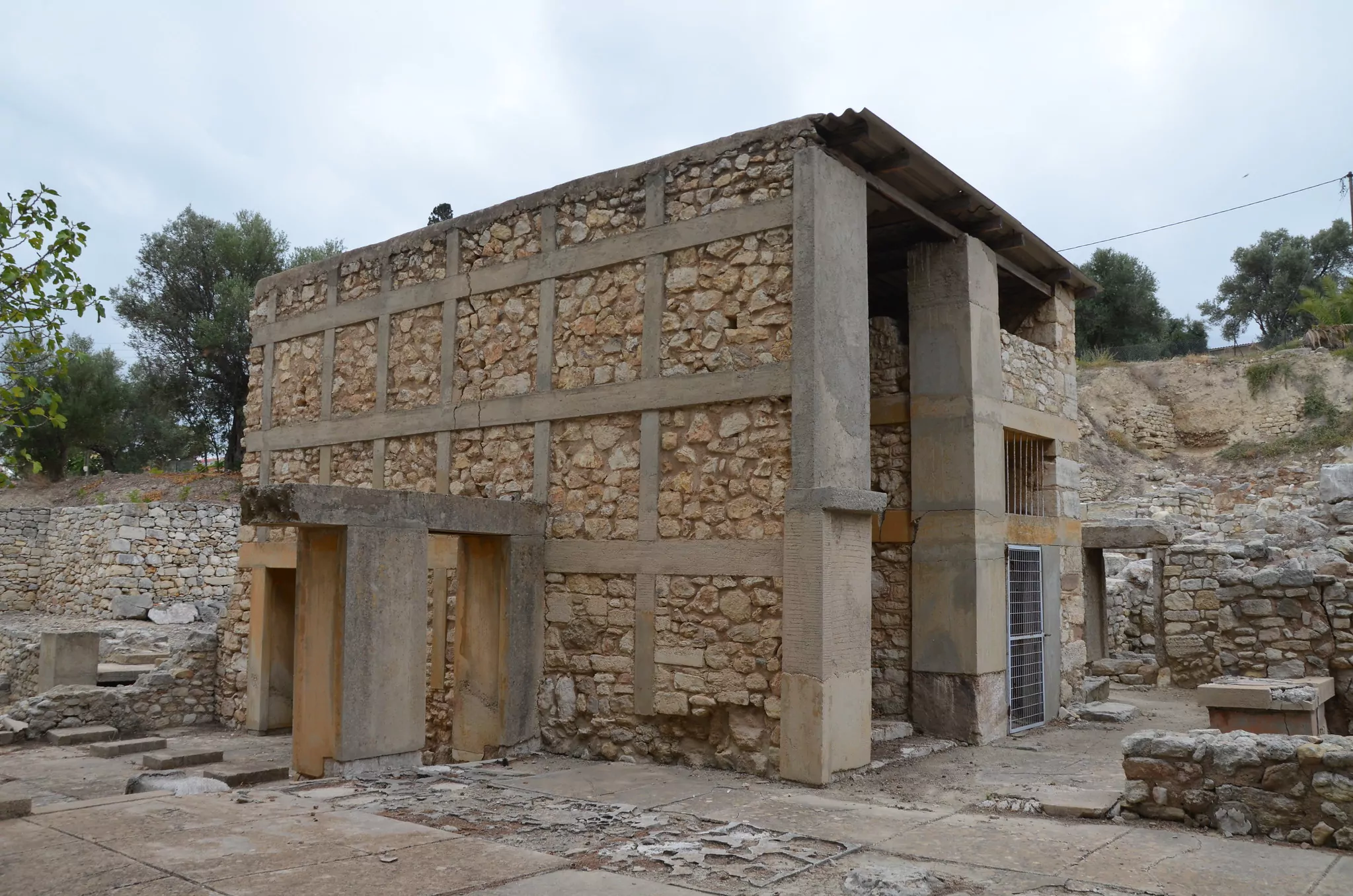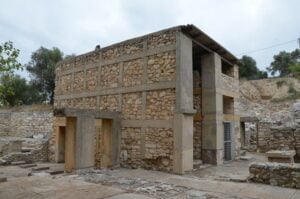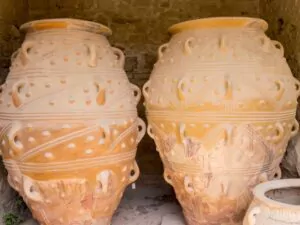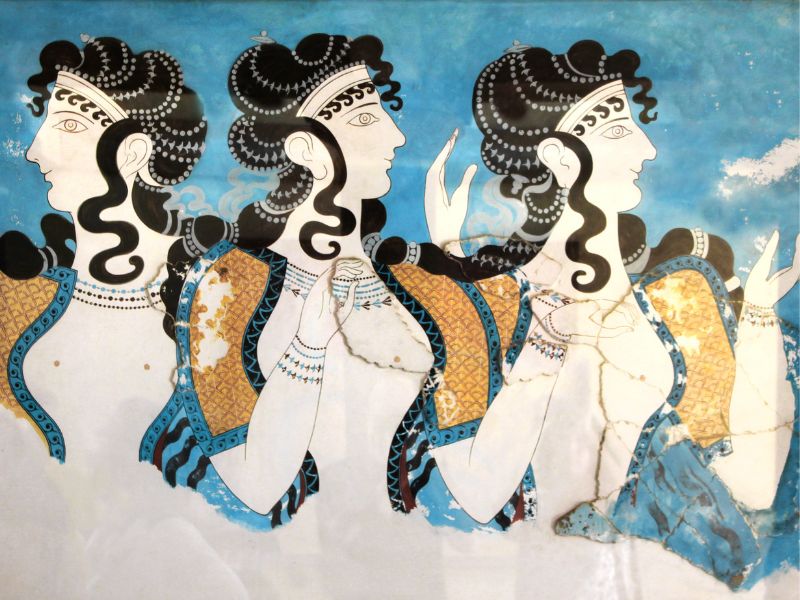
Discovering the Royal Villa at Knossos: A Journey into Minoan Civilization
The Mediterranean island of Crete is famous for its stunning landscapes and rich cultural heritage, which spans millennia of human history. Among its most fascinating and enigmatic archaeological sites is the Palace of Knossos, the centre of the Minoan civilization that flourished in Crete from around 3000 BCE to 1450 BCE. Within the sprawling complex of Knossos lies the Royal Villa, a magnificent building that stands out for its unique architectural features and richly decorated interiors. In this blog post, we will delve into the fascinating history, architecture and cultural significance of the Royal Villa at Knossos, revealing some of the secrets of one of the world’s oldest civilizations.
Table of Contents
Discover by Arthur Evans
The Royal Villa at Knossos was first discovered in 1904 by the British archaeologist Sir Arthur Evans, who spent over a decade excavating the site and uncovering its hidden treasures.
The villa was built during the Old Palace period of Minoan civilization, around 1900-1700 BCE, and saw several renovations and additions over the centuries. It is believed that the villa was the residence of the royal family of Knossos, the most powerful rulers of the Minoan society.
However, there are different theories about the exact functions and occupants of the villa, as many of its features remain open to interpretation.
Description of the Royal Villa
The architecture of the Royal Villa at Knossos is one of its most impressive aspects and reflects the creative and innovative spirit of the Minoan builders.
The villa consists of three floors connected by a triple stone staircase that spirals around an open-air courtyard. The ground floor housed grand reception halls, residential apartments, cult rooms, storerooms, and other auxiliary spaces. The first floor was mainly dedicated to domestic and administrative activities, while the second floor had a more private and secluded character, with smaller chambers and light wells.
The most striking feature of the villa is the tripartite Minoan Hall, a spacious and elegant room that consists of an antechamber, an opulent central hall with multiple columns and light wells, and an external lightwell that channels natural light from above.
The Mysterious Pillar Crypt
Another unique element of the Royal Villa at Knossos is the Pillar Crypt, a cult space located beneath the Minoan Hall. This mysterious chamber has a central pillar surrounded by stone cisterns and niches that may have contained offerings or sacred objects. Some scholars argue that the Pillar Crypt was used for ritual purification or even human sacrifices, although this is still a matter of debate.
The villa’s other notable features include vibrant frescoes depicting scenes of daily life, hunting and war, as well as intricate stucco reliefs and columns with elaborate capitals.
Significance of the Royal Villa
The cultural significance of the Royal Villa at Knossos cannot be overstated, as it represents the pinnacle of Minoan architectural and artistic achievements.
The villa’s intricate layout, sophisticated engineering, and lavish decoration reflect the wealth and power of its owners and the Minoan civilization as a whole. The villa also played a crucial role in the religious and ceremonial life of the Minoans, who worshipped a variety of deities and spirits associated with nature, fertility and the afterlife.
Finally, the Royal Villa at Knossos exerted a lasting influence on later architectural and artistic traditions, inspiring artists and architects throughout the Mediterranean world to create their own interpretations of the Minoan style.
In conclusion, the Royal Villa at Knossos is a truly remarkable and awe-inspiring monument of human creativity and ingenuity, which offers a glimpse into the distant past of Crete and the wider Mediterranean region.
Its discovery and reconstruction represent a major milestone in the history of archaeology and ancient history, and continue to attract thousands of visitors from around the world each year. By exploring the history, architecture, and cultural significance of the Royal Villa at Knossos, we can gain a deeper understanding of the complex and fascinating civilization of the Minoans, and appreciate the enduring legacy of their art and culture.
So, if you ever find yourself in Knossos Palace in Crete, don’t miss the chance to discover the Royal Villa at Knossos and immerse yourself in its mystery and grandeur.
Sources – Further Research
- McEnrone, J. (2010). Architecture of Minoan Crete. University of Texas Press.
- Jarus, O. (2017). Knossos: Palace of the Minoans. https://www.livescience.com/27955-knossos-palace-of-the-minoans.html
- German, S. (2020). Knossos. https://www.khanacademy.org/humanities/ancient-art-civilizations/aegean-art1/minoan/a/knossos
- Ephorate of Antiquities of Heraklion – Knossos Scientific Committee. (2015). Knossos Documenta. https://knossosdocumenta.gr/en/the-palace-of-knossos/
- Gibson, G., Morden, M., Rowbotham, W. (2017). Odyssey Adventures in Archeology. https://www.odysseyadventures.ca/articles/knossos/articleKnossos03.approach.html









